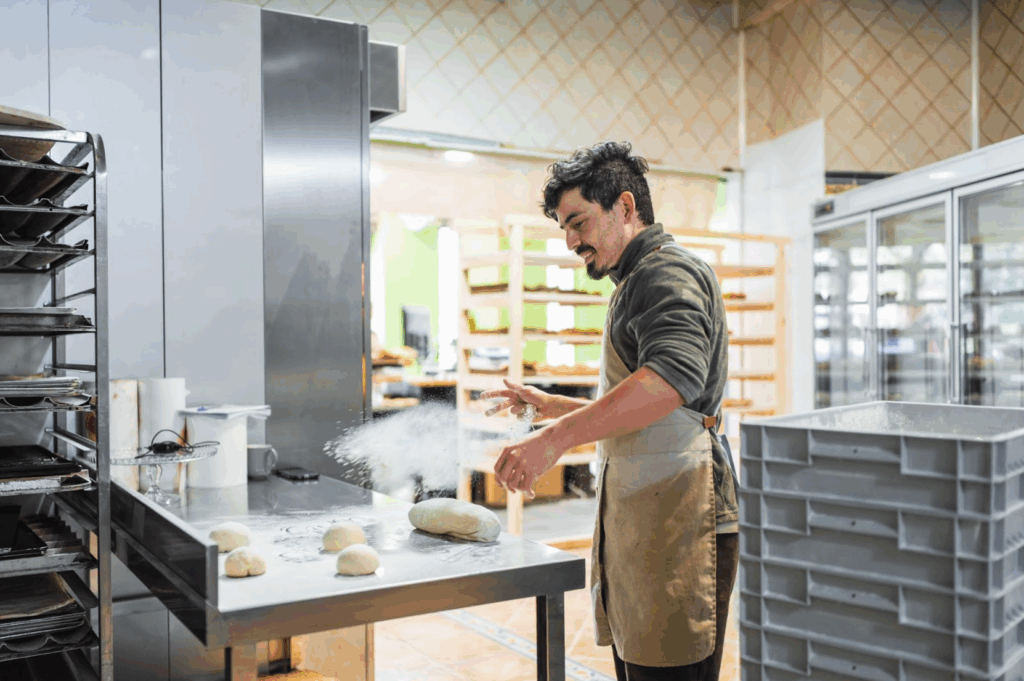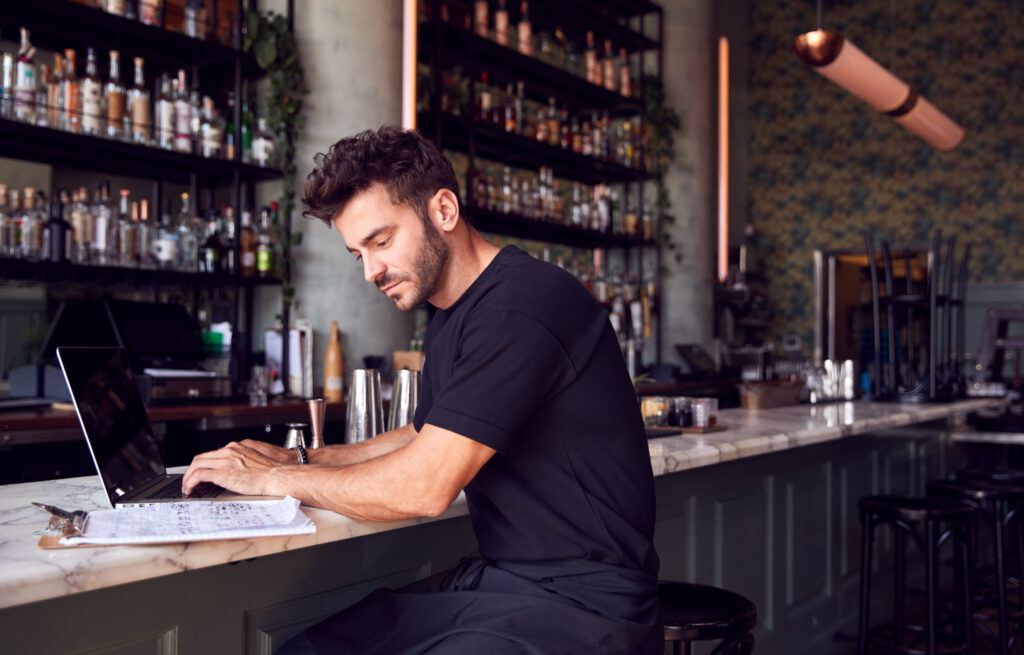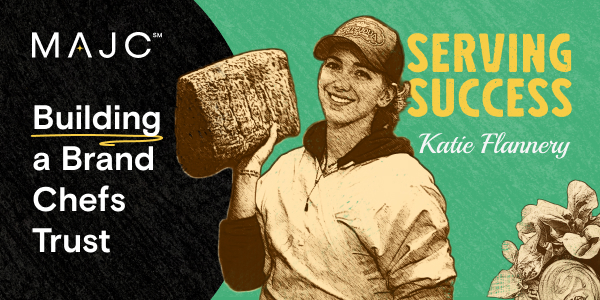How to Turn Your Restaurant’s Story into Brand Loyalty

Why Story Matters
Storytelling is strategy. Restaurants thriving right now lead with purpose and communicate it clearly in their food, their spaces, and the way they lead.
The perspectives shared here come from conversations that Matt Jennings and Carolyn Grillo have with successful restaurant owners and operators on MAJC’s podcasts Restaurant Ready and Serving Success.
Each of these chefs has built a brand that connects because their story and their actions always match. Their experiences offer practical lessons for any operator looking to build a brand that lasts.
1. Define Your Brand Promise
Before you promote anything, clarify the promise you are making to guests and to your team.
A brand promise is what guests can count on and what your team can rally around. Think of it as your North Star. It should be simple, emotional, and consistent.
At one of Matt Jennings’ restaurants, the brand promise was “Everyone leaves happy.” It was on the wall, repeated at every pre-shift, and reinforced through empowerment. If a guest was not smiling, any team member could comp a dish, send dessert, or offer a gift card without approval. The goal was simple. Make it right, right away.
Build yours:
- Identify what matters most. What do you want to be known for beyond food?
- Define guest success. What should people feel when they leave?
- Keep it credible. Promise only what you can deliver daily.
- Make it universal. Your promise should hold up on your busiest night.
- Empower your team. A great promise is lived, not laminated.
2. Build Your Story from the Inside Out
Your brand is how you make people feel.
Chef Maria Mazon builds her brand around honesty, not polish. “I am not trying to sell you tacos. I am trying to sell you my story.” “If I am honest about who I am, people feel that. That is what keeps them coming back.”
Guests feel when your story is real. Every decision, from your menu to your tone of voice, should align with your promise.
Operator move: Start every pre-shift with the question “Who made someone’s day yesterday?” You will reinforce your story through actions, not words.
With your culture aligned, you can start sharing your story beyond your four walls.
3. Share Stories That Keep Guests Coming Back
Marketing earns attention through meaning.
Most operators think they should post on social media more often, but great marketing is not about frequency. It is about connection. The restaurants that stand out treat social media like a conversation with their guests. They show their work, celebrate their people, and invite guests into the process.
To make that easier, we use a simple structure that helps teams plan and tell stories with rhythm and intention.
The Soap Opera Strategy
This approach keeps guests hooked through emotion and rhythm.
Three themes to rotate:
- You: Why you started, what you believe, what you have learned.
- Your Restaurant: The inspiration behind your dishes and daily work.
- Your People: The chefs, servers, and guests who make it happen.
Touchpoints:
- Your opening-day story.
- How a seasonal dish goes from idea to plate.
- A day in the life of your sous chef or your favorite regular.
Simple pacing:
- Week 1. Share your story.
- Week 2. Show your process.
- Week 3. Highlight your people.
By week three, your feed reads like a series, not a sales channel.
4. Make Every Detail Tell the Story
Your restaurant is a living brand. Every detail should reflect who you are.
Atlanta restaurateur Paul Donahue calls it a sense of place. “A restaurant or bar needs to have a sense of place.” While Newport restaurateur Nick Schorsch, who grows heritage concepts, protects that emotional core. “We never change what people love. We keep the owners, the employees, and the food exactly the same.”
Operator moves:
- Audit the space quarterly. Does it still feel like your story?
- Update menus and signage to reflect your brand language.
- Teach the story in onboarding.
- Keep one ritual that never changes. A dish, a greeting, a playlist.
With your story built into the experience, marketing becomes a reflection of what already feels true to guests.
5. Marketing That Works in the Real World
Storytelling only works when people can see it. The strongest brands do not separate operations and marketing; they treat them as the same thing. Every pre-shift, every post, and every guest interaction is part of your message.
Once your story and brand promise are clear, your marketing should show how you live them day to day. These practical moves help operators bring their story to life across every channel, from social media to the dining room floor.
Reuse, do not reinvent. “You have to learn pretty quickly how to reuse, recycle, and edit content you already have,” says Damaris Phillips. Take one story and turn it into five posts—a clip, a quote, a behind-the-scenes photo, a team spotlight, and a guest feature.
Keep it real and regular. Pick one weekly theme. Menu Monday or Team Thursday. Show up, keep it human, and do not overproduce.
Empower your team. Your best marketing often comes from the people living it. Encourage quick snapshots and short videos. Authentic beats perfect.
Use data as your mirror. Watch what drives engagement and real action. Do reservations or email signups lift after certain posts. Let that data guide your next move.
6. Keep Your Promise Alive
Chef Sean Sherman reminds us, “We should be supporting our local community as much as possible. When guests understand where the food comes from and who it supports, it changes the way they experience it.”
When your promise, story, and systems work together, guests feel it. That alignment turns purpose into loyalty.
Sustain it:
- Review your brand promise with your team every quarter.
- Use guest feedback to check if the experience matches the story.
- Celebrate the small wins that reinforce your values.
- Revisit your message when the menu, team, or market changes.
The best marketing does not look like marketing. It looks like purpose, lived out shift after shift.As Maria Mazon says, “If I am honest about who I am, people feel that.” That honesty, backed by consistency and clarity, is your strongest growth strategy. When your team believes it and your guests feel it, your story sells itself.
Want help shaping your brand promise and storytelling strategy. Join the MAJC Community to access templates, marketing sessions, and real examples from operators building brands that last.
At MAJC, AI helps us organize thoughts and speed up workflows, but every article is shaped, refined, and approved by real people who live and breathe this industry. We think honesty (like hospitality) works best when it’s real.

